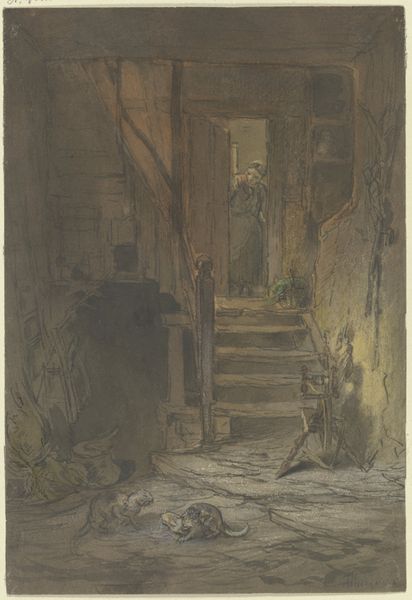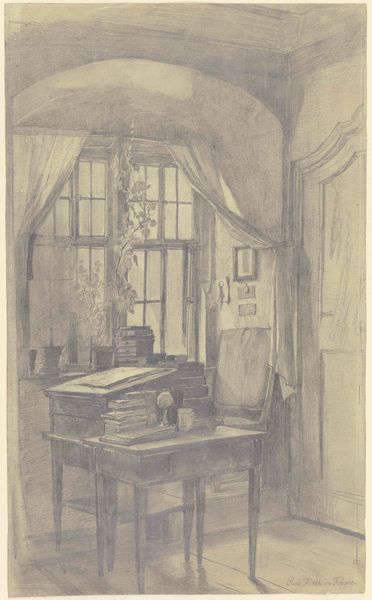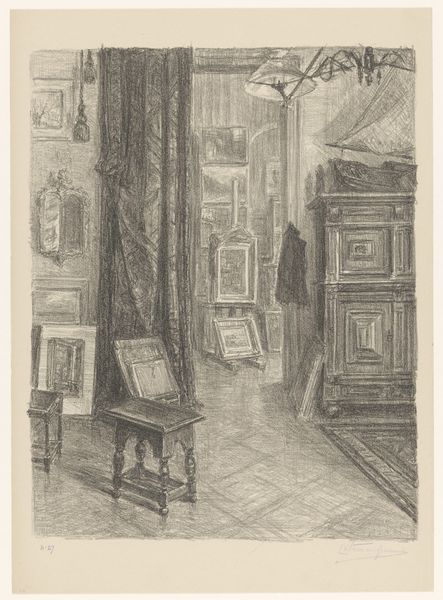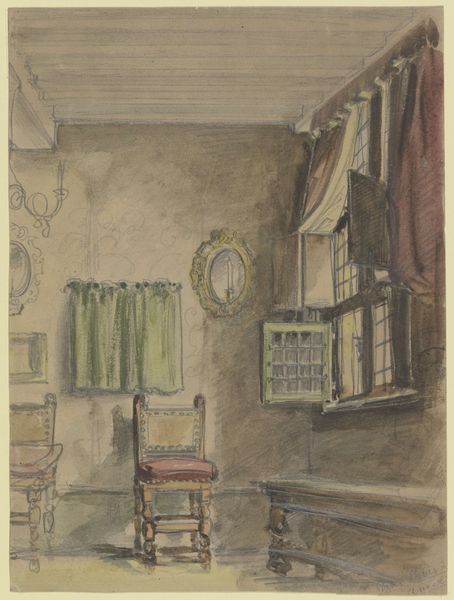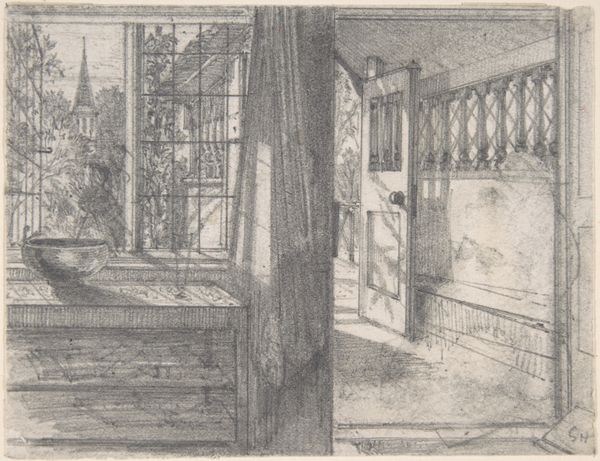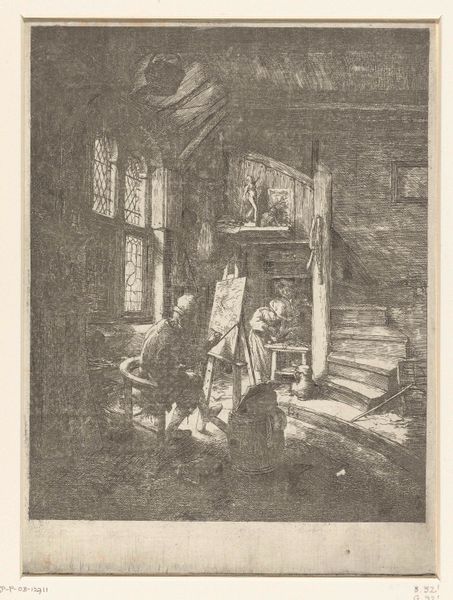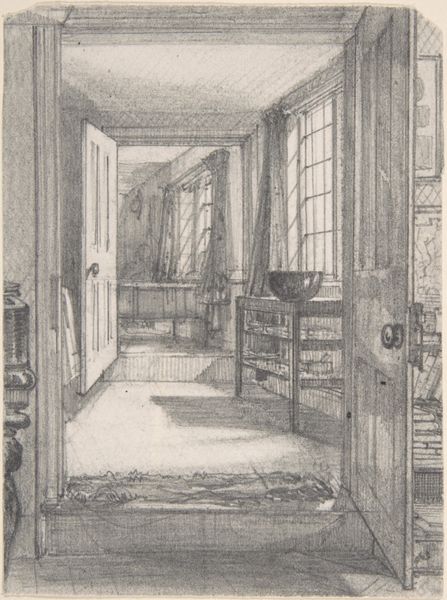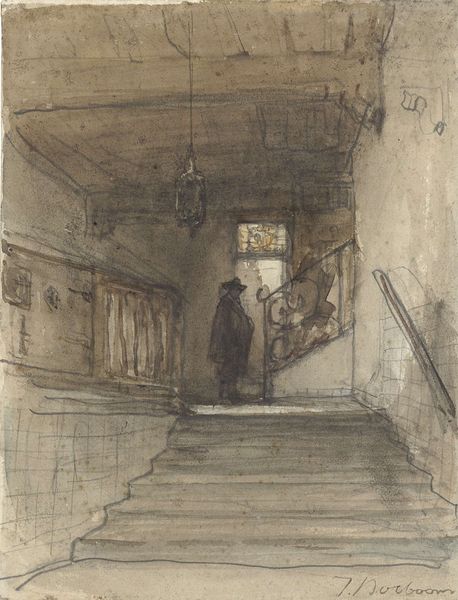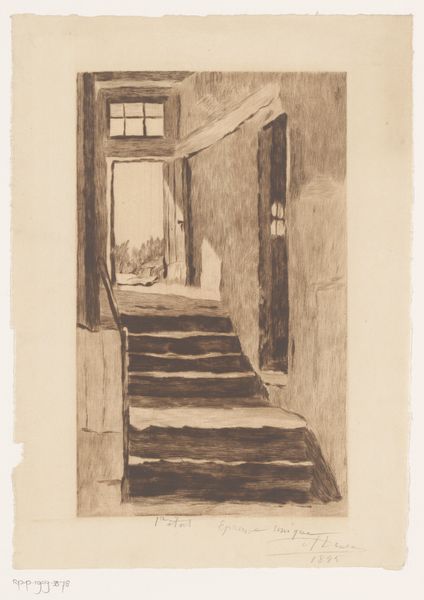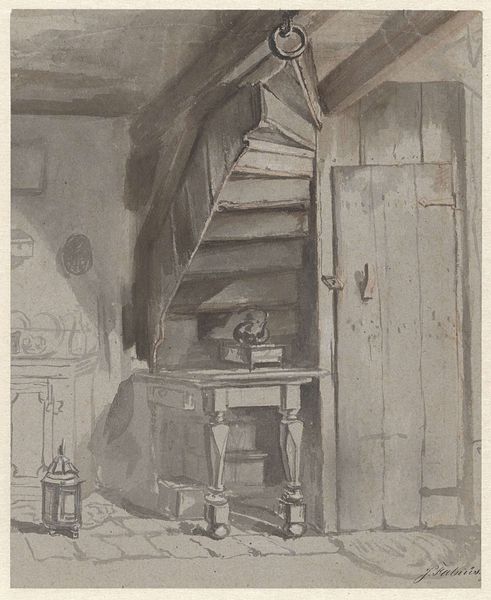
Vor der Wohnung Anton Radls im Hinterhaus des Heerd'schen Hauses in der Friedberger Straße 144 1846
0:00
0:00
drawing, watercolor, ink, chalk, architecture
#
portrait
#
drawing
#
landscape
#
charcoal drawing
#
watercolor
#
ink
#
romanticism
#
chalk
#
watercolor
#
architecture
Copyright: Public Domain
Curator: Philipp Rumpf's "Vor der Wohnung Anton Radls im Hinterhaus des Heerd'schen Hauses in der Friedberger Straße 144," created in 1846, offers a glimpse into an intimate domestic scene. Editor: There’s an incredible sense of stillness about it, despite the activity in the background. A muted palette, perhaps watercolor and ink?, that almost feels like looking at a faded memory. Curator: Indeed, the materiality itself speaks to a Romantic sensibility, which permeates much of Rumpf's oeuvre. The architectural rendering provides a framework—a series of receding planes punctuated by doorways and levels—in which to contemplate the nature of artistic life and community. Observe how Rumpf frames Radl, an art collector. Editor: I see how the threshold plays a critical role. The staging makes one feel on the edge of something, on the periphery. Those stairs and ornate balustrades situate the viewer, placing them at a critical distance. The presentation of food via servants…that adds layers. What’s on the tray being brought in—comfort? Sustenance? We can only speculate on these domestic dynamics. I cannot help but notice how a feminine body recurs at different levels throughout the scene, a subtle commentary maybe on the role of women in art-making or patronage? Curator: Perhaps. We can, with some rigor, understand the series of framing devices operating here: not only the literal doorway through which we see figures bearing a tray, but also the sculptures placed just inside the apartment—framed images of women, evoking ideals of beauty or virtue. In this context, the scene is about the artist's workspace, about artistic life as a construction. The formal aspects communicate order, even while a sense of interiority and solitude takes hold. Editor: That is insightful. To move beyond the artistic or technical construction though: could we consider this piece within the context of social hierarchies of the time? The act of serving reinforces class dynamics, made even more apparent by their quiet integration into this intimate moment. I see in this snapshot how quotidian power structures were accepted, yet made ever visible. Curator: Indeed, you urge us to expand our interpretive framework. However, by understanding formal tensions—the composition, treatment of light—I am drawn to consider not just the depiction, but the aesthetic strategy that Rumpf employed to give us a lens into a moment in art history, in Germany. Editor: Rumpf offers us a compelling reminder to actively explore intersections—between formal structure and contextual histories—in order to fully examine and comprehend any work.
Comments
No comments
Be the first to comment and join the conversation on the ultimate creative platform.
